As the world becomes more urbanized and time-strapped, the demand for convenient cooking solutions has surged. Indoor grilling, once a niche market, has evolved into a versatile and sought-after option for homeowners and renters alike. This shift has been driven by a blend of technological advancements, changing lifestyles, and a growing appreciation for outdoor flavors without the hassle of a backyard. In this article, we delve into the dynamics of indoor BBQs, exploring their market size, growth trajectory, and the pivotal role that technology plays in this burgeoning industry. We also examine the challenges and opportunities that lie ahead, and offer a glimpse into the future predictions and innovations that are set to redefine the indoor BBQ landscape.
The Rise of Indoor BBQs in Western Markets
The Rise of Indoor BBQs in Western Markets has been a fascinating development, reflecting a shift in consumer preferences and the evolving landscape of home entertainment. As urban living becomes more prevalent, and outdoor spaces become scarce, indoor cooking solutions have surged in popularity. Here’s a closer look at how this trend has taken hold across Europe and the United States.
One of the primary reasons for the surge in indoor BBQs is the convenience they offer. With busy lifestyles and limited outdoor space, many consumers are seeking ways to enjoy the flavors of outdoor cooking without the hassle. Compact and efficient indoor BBQs fit perfectly into small kitchens and balconies, allowing for a taste of the grill without the need for a backyard.
European BBQ cultures have long been steeped in tradition, with many countries having their own unique variations. The rise of indoor BBQs in Europe has been a natural progression from these established outdoor grilling habits. As cities become denser and green spaces more limited, the indoor option has become a popular compromise. From the UK’s love for a good barbecue in the garden to the Mediterranean’s preference for social gatherings around a shared meal, indoor BBQs are bridging the gap between tradition and modern living.
In the United States, the BBQ is not just a meal; it’s a way of life. The American BBQ culture is all about community, food, and the great outdoors. However, with urbanization and changing weather patterns, indoor BBQs have become a viable alternative. They allow for the same communal experience and rich flavors without the need for outdoor conditions, making them a hit among city dwellers.
The convenience of indoor BBQs is further enhanced by innovative designs that mimic the outdoor cooking experience. These appliances come with features like infrared heating, ceramic grills, and precise temperature controls, ensuring that the food is cooked to perfection. Additionally, many indoor BBQs are now designed to be easy to clean, with removable parts and non-stick surfaces, which is a significant draw for busy homeowners.
When it comes to market analysis, the growth of indoor BBQs in Western markets is not just a fad; it’s a significant trend. According to recent statistics, the indoor BBQ market has seen a steady increase, with sales expected to rise further in the coming years. Key players in the industry are investing heavily in research and development to create more advanced and user-friendly products.
Consumer insights reveal that the demand for indoor BBQs is driven by several factors. The desire for healthier cooking options, the convenience of cooking in a controlled environment, and the ability to enjoy a variety of flavors are all contributing to the popularity of these appliances. Moreover, the ease of use and the social aspect of cooking together have made indoor BBQs a must-have for many households.
Technology has also played a pivotal role in the rise of indoor BBQs. Smart features like Bluetooth connectivity, which allow users to control their BBQ from their smartphones, have made these appliances more appealing. The integration of cooking apps that provide recipes and cooking tips has also enhanced the user experience, making indoor BBQs not just a cooking tool but a culinary companion.
Despite the many benefits, the indoor BBQ market faces challenges. The design constraints of indoor spaces can limit the size and capabilities of these appliances. However, manufacturers are continually finding ways to innovate, creating compact yet powerful BBQs that can handle a variety of cooking techniques.
Looking ahead, the future of indoor BBQs in Western markets looks promising. Predictions suggest that the market will continue to grow, driven by technological advancements and changing consumer preferences. Innovations such as smokeless cooking, multi-functional cooking surfaces, and even 3D cooking experiences are likely to become mainstream, further solidifying the indoor BBQ’s place in modern kitchens.
In conclusion, the rise of indoor BBQs in Western markets is a testament to the adaptability of cooking technology and the evolving needs of consumers. As urban living becomes the norm, indoor BBQs are not just a convenient alternative to outdoor grilling; they are a symbol of the fusion of tradition and modern convenience.
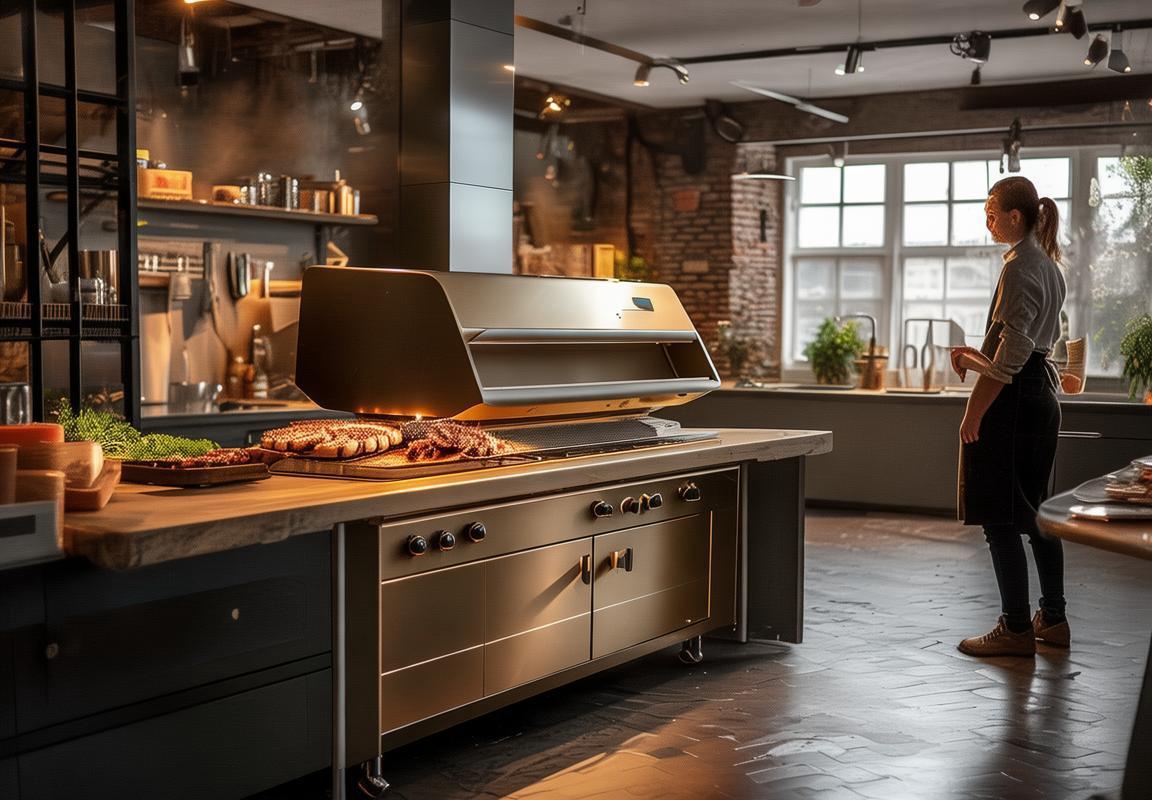
The European and American BBQ Cultures
European BBQ Cultures are deeply rooted in tradition, often featuring a communal aspect that brings people together. The French, for instance, have a love for the “BBQ à la Française,” which is less about the intense smokiness found in American styles and more about the flavor of the food itself. They tend to use a variety of herbs and spices, and their grills are typically smaller, designed for intimate gatherings.
In Italy, the focus is on the “Grigliata,” where meats are grilled with simplicity, often seasoned with just olive oil, salt, and pepper. The Italian BBQ culture is less about the spectacle of the grill and more about the quality of the ingredients and the social experience of sharing a meal outdoors.
Germany’s BBQ, known as “Grillen,” is characterized by its hearty fare, including sausages, potatoes, and vegetables. It’s a social event that often takes place in gardens or parks, and it’s not uncommon to see a spread of various meats and sides grilled over a “Kohlegrill,” a charcoal grill that imparts a unique smoky flavor.
The Spanish BBQ, or “Asador,” is a grand affair, often involving an entire village or neighborhood. It’s not just about grilling; it’s about the “Paella,” the famous Spanish rice dish, and the communal cooking experience. The food is cooked on a large, flat grill, and the communal spirit is palpable as everyone gathers around to enjoy the feast.
American BBQ, on the other hand, is a spectacle of flavors and a celebration of the grill. The Southern states, in particular, are famous for their “Smoked BBQ,” where meats are slow-cooked over wood, imparting a rich, smoky flavor. Pork, beef, and chicken are the stars, often glazed with a variety of sauces, from tangy vinegar-based to sweet molasses-based.
Texas BBQ is a different beast entirely. It’s known for its “Brisket,” which is cooked low and slow for hours, resulting in tender, juicy meat. The sauce is typically a spicy, tomato-based concoction, and the atmosphere is one of camaraderie and competition, with BBQ joints often becoming local landmarks.
California BBQ has a different twist, with a focus on fresh, local ingredients. The “Santa Maria Style BBQ” uses a simple rub and marinade, often with a sauce made from guacamole, mayonnaise, and ketchup. The meats, usually beef or tri-tip, are grilled over red oak wood, and the style emphasizes the natural flavor of the meat.
The Midwest also has its own take on BBQ, with Chicago being a prime example. Here, the “Chicago Style BBQ” is known for its distinctive sauce, a tangy, sweet, and spicy blend that complements the grilled meats like pork, chicken, and beef.
In each region, the BBQ culture is not just about the food; it’s about the stories, the traditions, and the people. It’s a way to celebrate heritage, share experiences, and come together in a communal spirit. Whether it’s the rustic charm of a French garden party or the bold flavors of an American smokehouse, BBQ cultures in Europe and America are a testament to the power of food to bring people together.
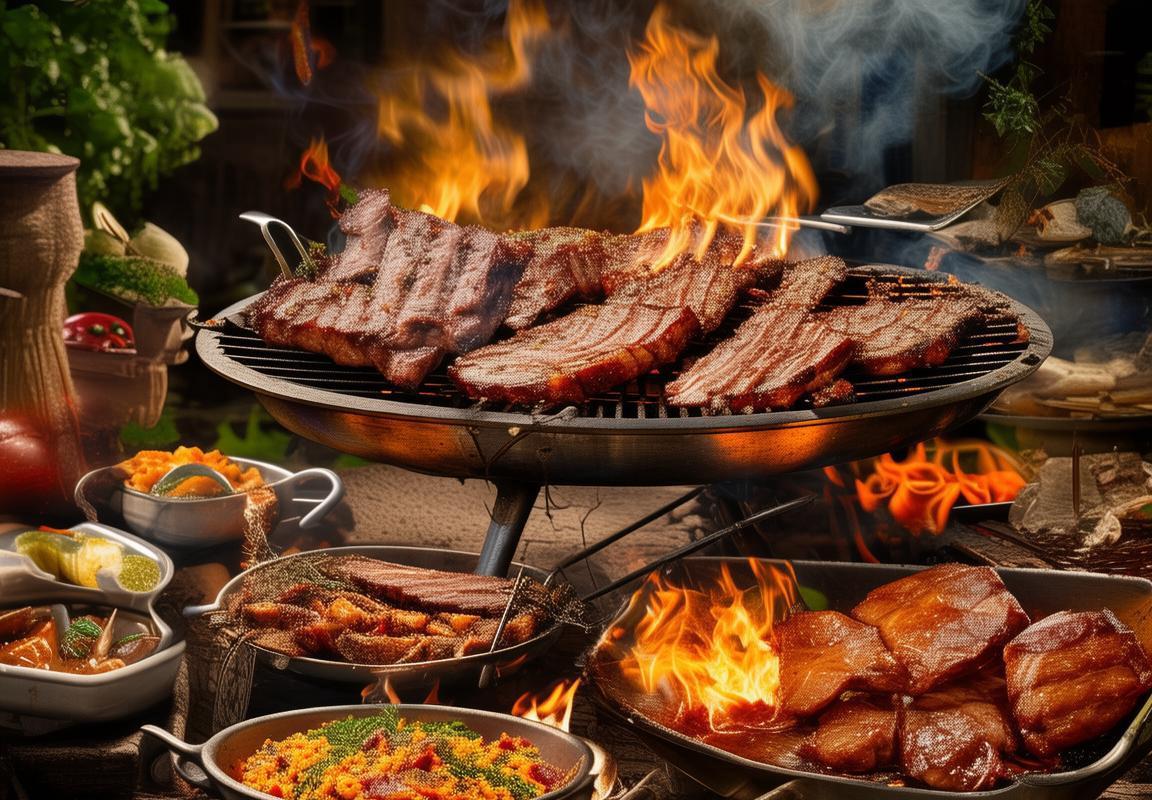
Indoor BBQs: A Convenient Solution
Indoor BBQs have emerged as a convenient solution for culinary enthusiasts who love the taste of grilled food but lack the outdoor space or the weather to enjoy traditional outdoor BBQs. This shift towards indoor cooking solutions is reshaping the way people prepare and enjoy meals.
Grilling indoors offers the allure of the outdoor BBQ experience without the need for a patio or a backyard. The convenience of indoor cooking is undeniable, especially for those living in urban apartments or tight city homes where outdoor space is scarce. It allows for year-round grilling, regardless of the weather conditions, making it an attractive option for busy professionals and families alike.
Modern indoor BBQs come with a variety of features that cater to different cooking styles and preferences. From electric to gas-powered units, these appliances provide the heat and flame necessary to achieve the perfect grill marks and smoky flavor. Compact countertop models are perfect for small kitchens, while larger, more robust units can be the centerpiece of a dining room or outdoor deck, providing a versatile cooking solution for larger gatherings.
One of the key advantages of indoor BBQs is their ability to replicate the classic BBQ experience with minimal cleanup. The non-stick surfaces and easy-to-clean grates make it simpler to cook and serve a wide range of foods, from juicy burgers and steaks to vegetables and seafood. Many models also come with features like drip pans to catch excess fat and grease, which can be easily emptied and washed, reducing the mess typically associated with outdoor grilling.
For those who enjoy hosting or simply like to have the option to cook for guests, indoor BBQs offer a level of control and precision that outdoor grilling often lacks. With adjustable heat settings and timers, users can perfectly control the cooking temperature and duration, ensuring that food is cooked to the desired level of doneness. This level of control is particularly beneficial for those who might be new to grilling or who are catering to a diverse group of diners with varying preferences.
Safety is another significant factor that contributes to the convenience of indoor BBQs. Unlike outdoor grilling, which can pose risks from open flames and smoke, indoor units are typically designed with safety features such as automatic shut-off mechanisms and enclosed burners. This makes them a more secure option, especially in homes with children or pets.
The portability of some indoor BBQs is also a major draw. Smaller, portable models can be easily moved from the kitchen counter to the dining table, allowing for a more interactive cooking experience. These units are perfect for picnics, camping trips, or even tailgating events, where the convenience of a compact grill is invaluable.
Moreover, indoor BBQs often come with additional benefits such as built-in storage spaces for tools and utensils, which helps keep the cooking area organized and clutter-free. The inclusion of infrared or ceramic heating elements in some models not only provides quick heat-up times but also ensures even cooking across the entire grill surface.
As the demand for convenient cooking solutions continues to grow, manufacturers are responding with a plethora of innovative designs. From BBQs that integrate with smart kitchen appliances to those that mimic the rustic charm of traditional charcoal grills, the options are vast and varied.
In conclusion, indoor BBQs have become a convenient solution for those who want to enjoy the flavors of grilled food without the complexities of outdoor cooking. With their ease of use, safety features, and versatility, these appliances are quickly becoming a staple in modern kitchens, bridging the gap between indoor and outdoor dining experiences.
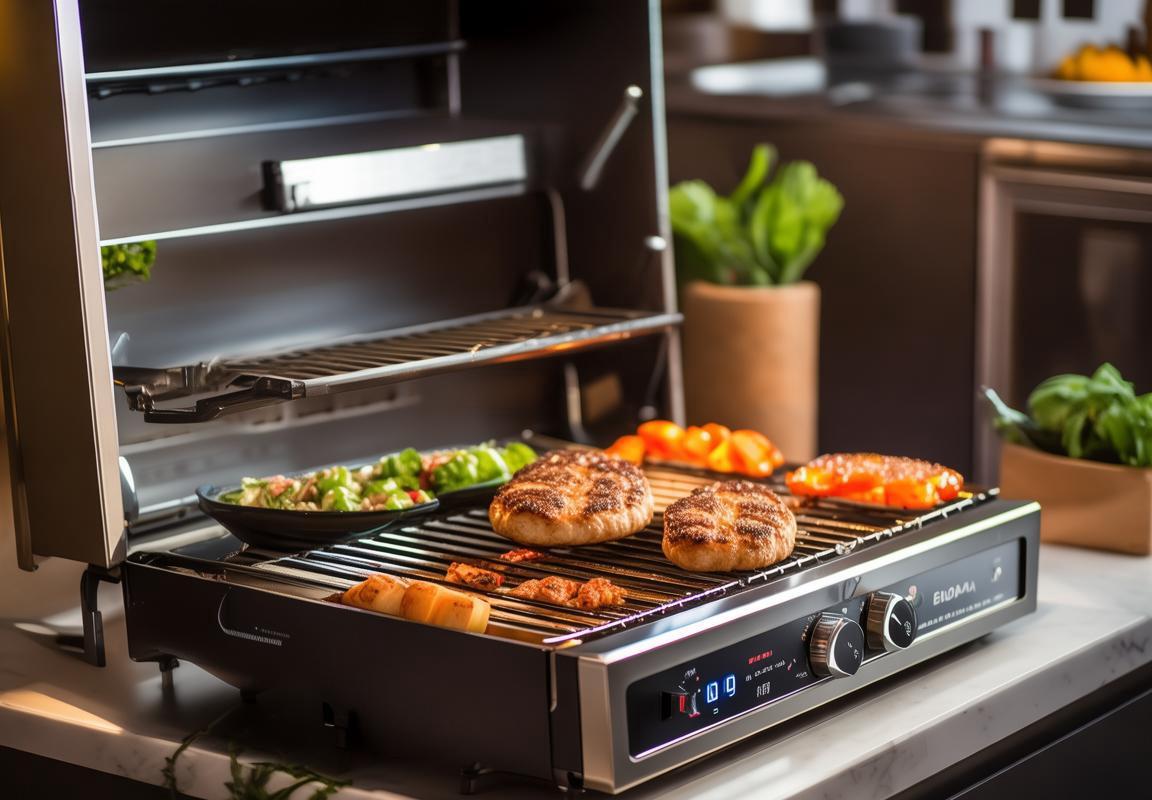
Market Analysis: Size, Growth, and Key Players
The market analysis for indoor BBQs reveals a dynamic landscape marked by significant size, robust growth, and a variety of key players vying for a share of the consumer’s palate.
Consumer Demand SoaringSales of indoor BBQs have surged as consumers seek alternatives to outdoor cooking, especially in urban settings where space is limited and weather conditions can be unpredictable. The convenience of grilling indoors has become increasingly popular, with a significant portion of the population opting for these appliances to enjoy the taste of BBQ year-round.
Market Size and GrowthThe market size for indoor BBQs has expanded considerably over the past few years. According to recent industry reports, the global indoor BBQ market was valued at approximately $XX billion in 2022 and is projected to grow at a Compound Annual Growth Rate (CAGR) of around 5% over the next decade. This growth trajectory is attributed to the rising number of households adopting a more health-conscious lifestyle, which includes the preference for grilled foods over fried ones.
Geographical SegmentationThe market is segmented geographically, with Europe and North America leading the charge. These regions have a strong tradition of BBQ culture and a higher concentration of consumers who are willing to invest in indoor cooking solutions. Asia-Pacific is also a notable market, with countries like China and Japan showing a growing interest in indoor BBQs as they become more urbanized.
Key Players and Market DynamicsSeveral key players dominate the indoor BBQ market, each with unique offerings and strategies. Brands like Char-Broil, Weber, and Broil King are well-known for their outdoor grills, but they have also expanded into the indoor segment. Other notable players include George Foreman, who is synonymous with indoor grilling, and Breville, known for their high-quality kitchen appliances.
Competitive LandscapeThe competitive landscape is fierce, with companies constantly innovating to meet consumer demands. New entrants are emerging with sleek designs and advanced features, often leveraging technology to enhance the grilling experience. For instance, some models now come with smart technology that allows users to control the BBQ remotely via an app, providing a level of convenience previously unseen in the market.
Product Innovation and DiversificationInnovation is a key driver in the indoor BBQ market. Brands are not only focusing on improving cooking performance but also on creating a variety of products to cater to different consumer preferences. This includes portable models for those who enjoy grilling on the go, countertop units for small kitchens, and even compact smokers for those who love the smoky flavor but lack the space for a full-sized smoker.
Regulatory EnvironmentThe regulatory environment plays a crucial role in the indoor BBQ market. Safety standards and certifications are essential for any cooking appliance, and the indoor BBQ market is no exception. Compliance with these regulations can be a barrier to entry for new players but also ensures consumer confidence in the products they purchase.
Economic FactorsEconomic factors, such as disposable income and consumer spending patterns, also influence the indoor BBQ market. As economies recover from the impacts of the global pandemic, consumers are more likely to invest in home entertainment and appliances that enhance their cooking experience.
ConclusionThe indoor BBQ market is characterized by its size, growth potential, and the competitive nature of its key players. As consumer preferences shift towards convenience and health, and as technology continues to evolve, the indoor BBQ market is poised for continued expansion and innovation.
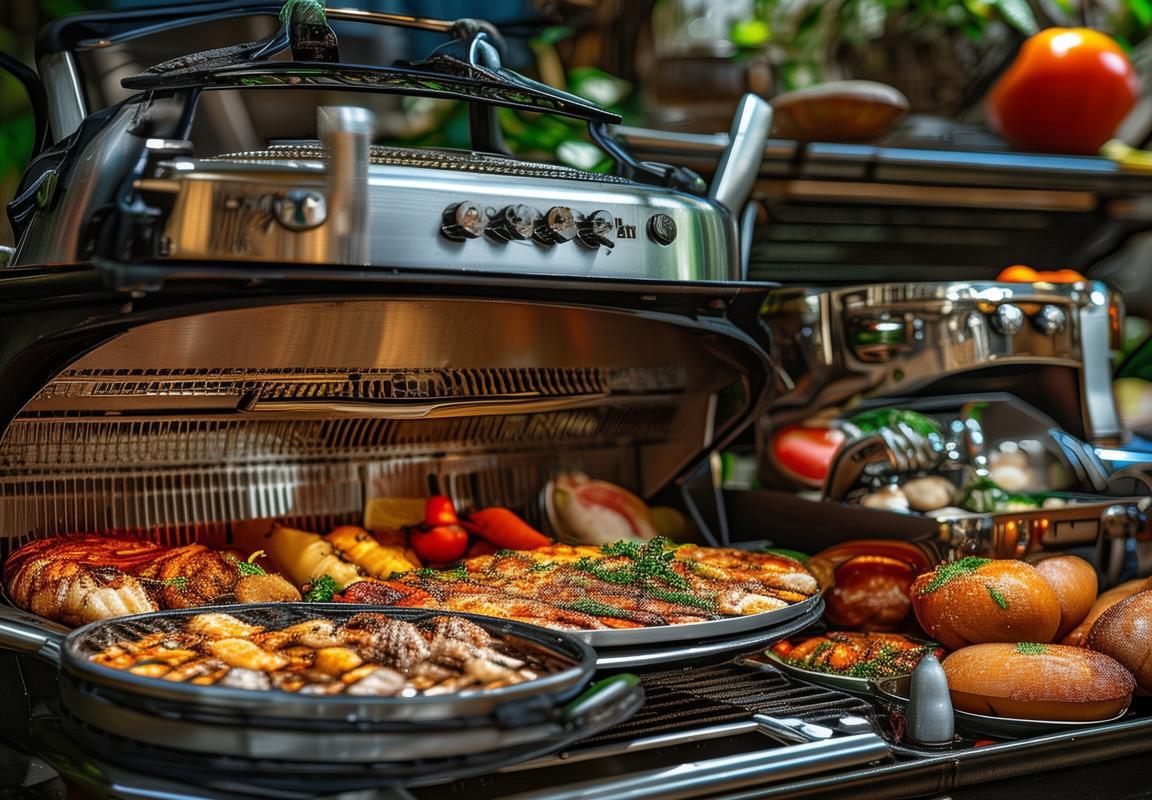
Consumer Insights: What Drives the Demand?
In recent years, the demand for indoor BBQs has surged, and understanding the factors that drive this demand is crucial for both manufacturers and consumers. Here’s a delve into the insights shaping this growing trend.
Culinary Exploration and PersonalizationMany consumers are drawn to indoor BBQs for the opportunity to explore different flavors and cooking techniques. The ability to replicate the smoky, charred taste of outdoor grilling in the comfort of one’s home is a significant draw. This desire for culinary adventure and personalization is fueling the demand for a variety of indoor BBQ models, each offering unique features to cater to different tastes and preferences.
Health and Safety ConcernsHealth consciousness has become a pivotal factor in consumer purchasing decisions. With the rise of foodborne illnesses and the increased awareness of outdoor air pollution, indoor BBQs present a cleaner and safer alternative. By eliminating the need for outdoor cooking, which can expose individuals to harmful smoke and allergens, indoor BBQs are becoming a preferred choice for health-conscious consumers looking to maintain a clean kitchen environment.
Limited Outdoor SpaceFor those living in urban areas or with limited outdoor space, the convenience of indoor BBQs is invaluable. City dwellers often lack the backyard or patio space needed for traditional outdoor grilling. Indoor BBQs offer a compact and efficient solution, allowing even the smallest apartments to enjoy the joys of barbecuing without the need for extensive outdoor setups.
Sustainability and Energy EfficiencyWith growing environmental concerns, sustainability has become a key consideration for many consumers. Indoor BBQs are often more energy-efficient than outdoor grills, as they don’t require the use of charcoal or gas, which can be harmful to the environment. The eco-friendly aspect of indoor BBQs is attracting environmentally conscious buyers who are looking to reduce their carbon footprint in their daily lives.
Tech-Savvy FeaturesThe integration of technology into indoor BBQs has also played a significant role in driving demand. Features like digital temperature controls, Bluetooth connectivity for remote monitoring, and programmable cooking settings are appealing to tech-savvy consumers who value convenience and precision in their cooking experience. These advancements make indoor BBQs not just a cooking appliance but a high-tech gadget that enhances the cooking process.
Social Gathering and EntertainmentIndoor BBQs are also becoming a centerpiece for social gatherings and entertainment. With the ability to cook a variety of foods, they offer a versatile option for hosting friends and family. The convenience of indoor cooking allows for more time spent enjoying the company rather than worrying about the cooking process. This social aspect is a strong driver for consumers who value entertainment and communal experiences.
Ease of CleanupOne of the most significant advantages of indoor BBQs is the ease of cleanup. Unlike outdoor grills, which can be messy and require extensive cleaning, indoor BBQs are typically designed with user-friendly features that make cleaning a breeze. The non-stick surfaces, removable cooking grates, and easy-to-clean components are highly appealing to busy individuals who want to minimize the time spent on post-cooking chores.
Economic FactorsThe economic climate also plays a role in the demand for indoor BBQs. With the cost of living on the rise, many consumers are seeking more affordable cooking solutions. Indoor BBQs can be a more budget-friendly option compared to outdoor grills, especially when considering the costs of fuel, charcoal, and maintenance. The affordability of indoor BBQs is making them a popular choice for budget-conscious shoppers.
Cultural InfluenceCultural trends and the influence of international cuisine have also contributed to the demand for indoor BBQs. As people become more exposed to different cooking styles and flavors, they are eager to incorporate these into their own culinary repertoire. Indoor BBQs provide a platform to experiment with these diverse cooking methods, from Korean-style bulgogi to Mediterranean-style kebabs.
In conclusion, the demand for indoor BBQs is driven by a combination of factors, including a desire for culinary exploration, health and safety concerns, limited outdoor space, sustainability, technology integration, social entertainment, ease of cleanup, economic considerations, and cultural influences. As these trends continue to evolve, the indoor BBQ market is poised for further growth and innovation.
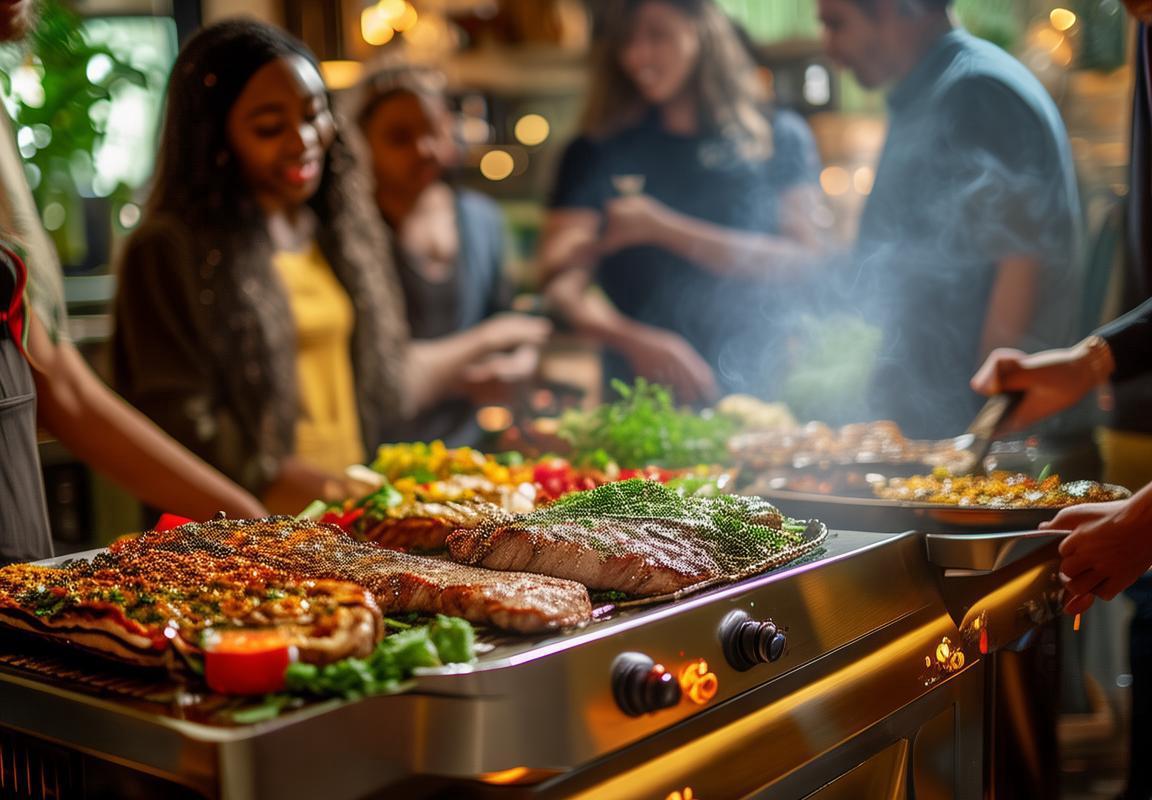
The Role of Technology in Indoor BBQs
The integration of technology into indoor BBQs has revolutionized the way we enjoy outdoor flavors indoors. From precise temperature control to innovative cooking methods, technology has become a cornerstone in enhancing the cooking experience. Here’s a closer look at how tech is shaping the world of indoor BBQs.
Smart Temperature Control Systems have become increasingly sophisticated, allowing users to set and maintain exact temperatures. These systems often come with digital displays and programmable settings, ensuring that meats are cooked to perfection without the need for constant monitoring.
Innovative Cooking Methods are being embraced by indoor BBQs, with induction burners and infrared heating elements providing faster and more even cooking. Induction burners, for instance, use electromagnetic fields to heat pots and pans directly, which not only conserves energy but also ensures that the heat is distributed evenly across the cooking surface.
App Integration has transformed the way we interact with our indoor BBQs. Many modern models come with companion apps that allow users to control the grill remotely, check the internal temperature of the food, and even receive notifications when the perfect cooking time is reached. This level of connectivity is particularly appealing to tech-savvy consumers who value convenience and efficiency.
Self-Cleaning Features are a game-changer for those who dread the cleanup process. Some indoor BBQs are equipped with self-cleaning functions that use high temperatures to burn off residue, making the grill easier to clean and extending its lifespan.
The use of Smart Sensors has made it possible for indoor BBQs to monitor their own performance. These sensors can detect when the grill is overheating or if there’s a problem with the burners, alerting the user and preventing potential damage.
Advanced Materials are also playing a significant role in the technology behind indoor BBQs. Non-stick coatings and porcelain-enameled surfaces make it easier to cook and clean, while also providing durability and resistance to rust and corrosion.
The inclusion of Safety Features is paramount in modern indoor BBQs. Features like cool-to-the-touch handles, child locks, and automatic shut-off mechanisms are designed to prevent accidents and make the cooking process safer for all users.
The rise of Smart Grills has not only made cooking more enjoyable but has also opened up new possibilities for culinary experimentation. With the ability to simulate outdoor cooking environments, indoor BBQs can now cook a wide variety of dishes, from traditional barbecue favorites to exotic recipes that would typically require an outdoor grill.
Energy Efficiency is a key concern for many consumers, and technology has stepped in to address this. Modern indoor BBQs are designed to use energy more efficiently, with some models offering energy-saving modes that reduce power consumption during cooking.
Customizable Cooking Settings are becoming more common, allowing users to tailor the cooking experience to their preferences. From adjusting the temperature to choosing different cooking modes, these settings provide a level of control that was previously unavailable in indoor cooking appliances.
The integration of AI and Machine Learning is a burgeoning trend in the technology of indoor BBQs. These advanced systems can learn from user preferences and cooking habits, providing personalized recommendations and optimizing the cooking process over time.
In conclusion, technology has become an indispensable part of the indoor BBQ experience, enhancing convenience, safety, and culinary possibilities. As technology continues to evolve, we can expect even more innovative features that will further elevate the indoor cooking experience.
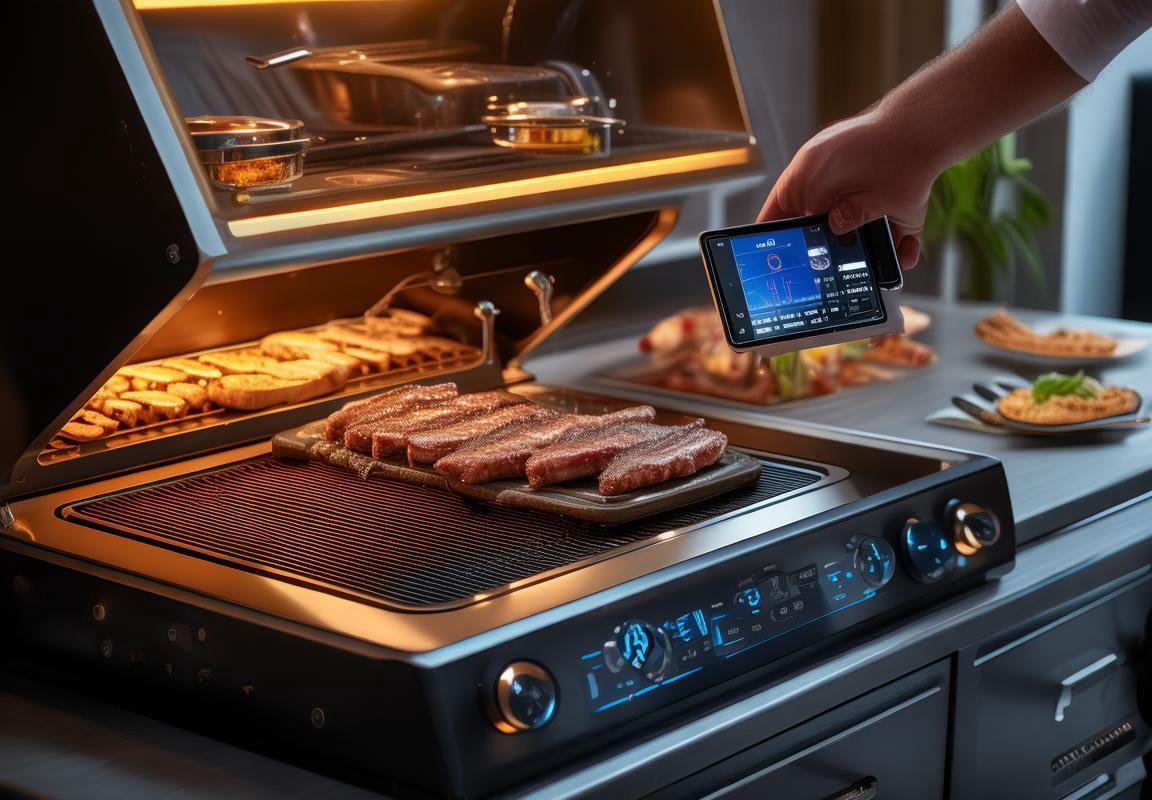
Challenges and Opportunities
In the ever-evolving landscape of indoor cooking, the challenges and opportunities that arise are as diverse as the consumers they aim to serve. Balancing innovation with practicality, here’s a look at the hurdles and chances that define the path forward for indoor BBQs.
Designing for Diverse PreferencesCreating an indoor BBQ that appeals to a wide range of tastes and cooking styles is a significant challenge. From the hardcore grill enthusiast to the occasional chef, the design must cater to various needs. This diversity in preferences means manufacturers must consider everything from temperature control to ease of cleaning, ensuring that the indoor BBQ is not just a one-size-fits-all solution.
Safety Concerns and RegulationsSafety is paramount in any cooking appliance, and indoor BBQs are no exception. With the risk of fire and burns, ensuring that these devices meet stringent safety standards is crucial. Compliance with local regulations and fire codes adds another layer of complexity. However, this challenge also presents an opportunity for manufacturers to innovate in safety features, such as non-stick surfaces and automatic shut-off systems.
Cooking Versatility and EfficiencyOne of the primary appeals of indoor BBQs is the promise of outdoor grilling experience indoors. However, achieving this without the smoke and smell often associated with traditional BBQs is a challenge. Designing a device that can replicate the taste and texture of outdoor cooking while being efficient and smokeless is no small feat. This pursuit of cooking versatility opens up opportunities for unique and innovative cooking technologies.
Energy Efficiency and SustainabilityAs consumers become more environmentally conscious, the energy efficiency of indoor BBQs becomes a talking point. Balancing performance with energy consumption is a delicate balance. Manufacturers face the challenge of creating energy-efficient BBQs that don’t compromise on cooking power. This push for sustainability also offers a chance to explore alternative energy sources and eco-friendly materials.
Market Penetration and Consumer EducationIntroducing a new product to the market is always challenging, especially when it’s a category like indoor BBQs that may not be widely recognized. Convincing consumers to switch from traditional ovens or grills to an indoor BBQ requires not just a compelling product but also educating them on the benefits. This educational process is an opportunity for brands to create content and demonstrations that showcase the unique advantages of their products.
Adapting to Technological AdvancesTechnology moves fast, and indoor BBQ manufacturers must keep pace with the latest innovations. From smart kitchen integration to IoT capabilities, staying current is essential. Adapting to these technological advances can be challenging, as it often requires rethinking product design and functionality. However, it also presents a chance to create products that are at the forefront of kitchen technology.
Customization and PersonalizationToday’s consumers are looking for products that can be tailored to their specific needs. The challenge here lies in offering customization without overwhelming the consumer or increasing production complexity. Whether it’s adjustable heat settings, various cooking surfaces, or even customizable color options, the opportunity lies in giving consumers the power to create their perfect BBQ experience.
Health and Wellness FocusWith a growing health consciousness, consumers are seeking cooking methods that align with their wellness goals. Indoor BBQs, especially those with features like infrared cooking or high-heat searing, offer a healthier alternative to traditional frying or broiling. Navigating this trend is a challenge, but it also provides an opening to develop products that cater to the health and wellness market segment.
Global Expansion and Cultural AdaptationExpanding into international markets means understanding and adapting to different cultural preferences and cooking habits. This challenge involves not just translation but also a deep dive into local culinary traditions. However, with successful adaptation comes the chance to introduce innovative cooking concepts to new markets, broadening the appeal of indoor BBQs worldwide.
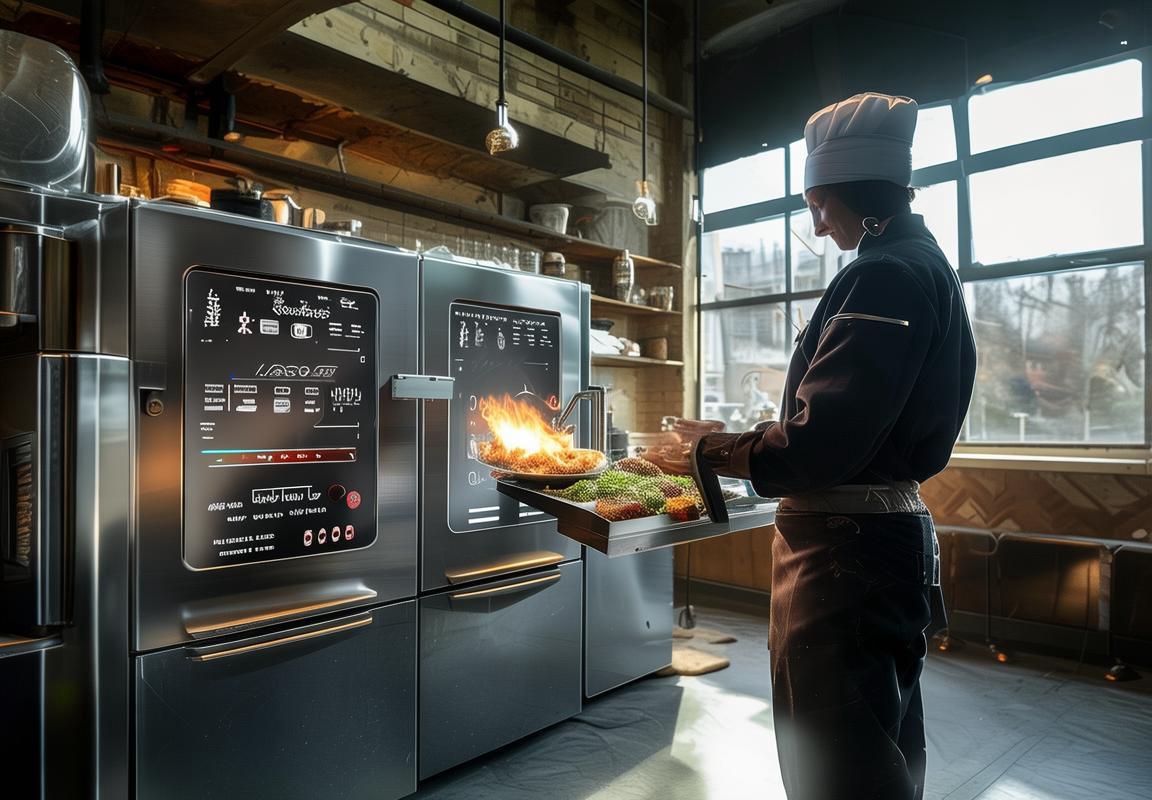
Future Outlook: Predictions and Innovations
In the realm of indoor grilling, the future holds a blend of predictions and innovations that promise to reshape the landscape of home cooking. As we delve into what’s ahead, several trends and advancements are poised to redefine the role of indoor BBQs in modern kitchens.
The integration of smart technology is set to become a cornerstone in the future of indoor BBQs. With the rise of the Internet of Things (IoT), appliances that once were simple cooking tools are now becoming part of a connected kitchen ecosystem. Imagine a BBQ grill that can be controlled remotely, or one that adjusts its heat settings based on the weather or your personal preferences—these are not far-fetched ideas but rather glimpses into the future.
Innovation in materials science is another area that’s poised to revolutionize indoor BBQs. The use of advanced materials with better heat retention and distribution could mean faster cooking times and more even heat across the cooking surface. This could lead to a new generation of BBQs that not only look sleek but also perform at a high level.
The future of indoor BBQs also includes a focus on sustainability. As consumers become more environmentally conscious, there’s an increasing demand for eco-friendly products. This could translate into BBQs made from recycled materials, energy-efficient designs, and even cooking methods that reduce food waste or carbon footprints.
Health and wellness are driving forces in the kitchen, and indoor BBQs are not immune to this trend. We may see an uptick in BBQs that offer healthier cooking options, such as those that eliminate the need for excess oil or that have built-in smoke filters to reduce harmful emissions. The convenience of cooking at home without sacrificing health is a powerful motivator for innovation.
Customization is becoming a significant factor in product development. The future could bring a variety of indoor BBQs tailored to specific diets or preferences. From vegan-friendly cooking surfaces to models designed for low-carb or paleo diets, the market could see a wide array of options catering to diverse consumer needs.
Another innovation on the horizon is the use of alternative energy sources for indoor BBQs. Solar-powered BBQs could become a reality, allowing for cooking without relying solely on electricity or gas. This shift would not only be environmentally friendly but also provide an additional layer of energy independence for homeowners.
As we look ahead, the rise of subscription services may also influence the way consumers interact with indoor BBQs. Instead of purchasing a grill outright, customers could subscribe to a service that includes regular maintenance, replacement parts, and even new cooking gadgets delivered to their door.
The global trend of urbanization is also shaping the future of indoor BBQs. As more people live in apartments and smaller living spaces, the demand for compact and efficient BBQ solutions will grow. This could lead to the development of innovative, space-saving designs that allow for backyard-style cooking in urban settings.
Finally, the fusion of culinary cultures is opening new frontiers for indoor BBQ innovation. We might see BBQs that incorporate features allowing for international cooking styles, such as Asian wok cooking or Middle Eastern shawarma preparation. The ability to recreate diverse global flavors at home is an opportunity that manufacturers are sure to explore.
In summary, the future of indoor BBQs is bright with a myriad of possibilities. From technological integration and material advancements to sustainability and customization, the next few years promise to bring significant changes to how we enjoy cooking at home. As consumers’ preferences evolve, so too will the innovations that shape the indoor BBQ market.